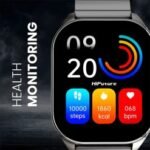Technology is becoming progressively more efficient and compact. The era of large phones, computers, and televisions has passed. We now possess sleek devices capable of processing and storing greater amounts of data than ever. Compared to the late twentieth century, these devices have become notably thinner and more portable. But what has driven this transformation? Here is an overview of how technology has diminished in size in recent years.
Technology has become more compact:
The drive for portability has significantly influenced the miniaturization of technology. Nearly everyone carries a mobile phone when departing from home, and many individuals also bring along tablets or laptops, in addition to wearing headphones or smartwatches. Bulky plugs and cables have been supplanted by Bluetooth connectivity and portable charging solutions, among other advancements. This evolution has created numerous opportunities for individuals on the go, enabling them to communicate with friends, monitor their daily activities, and stream videos online—achievements made possible by the reduction in technology size.
Computers:
The remarkable innovation in this context is the silicon computer chip, coupled with the decreasing dimensions of transistors. Many of us recall the era when computers were enormous and exceedingly heavy. With the introduction of ultra-slim monitors, the portability of these devices has greatly improved. Additionally, computers have become considerably more economical, allowing individuals to utilize them at home for personal purposes rather than solely in professional environments.
Mobile technology:
The objective of maximizing data storage while minimizing space usage is essential for advancing portable technology. Spin Transfer Torque Random Access Memory (STT RAM) has played a significant role in this development. Devices such as laptops, tablets, and smartphones have liberated users from the confines of traditional desktop computers. Furthermore, these innovative methods of accessing computing systems can assist in addressing the digital divide in the UK by providing schools with portable technology to enhance educational opportunities.
Smart TV’s
The outdated, energy-consuming television sets of yesteryear are now a thing of the past. Presently, televisions are more efficient and environmentally friendly, featuring a variety of energy-saving models that are sleek and compact. These devices are controlled by remote controls that utilize durable AAA batteries. Additionally, they are equipped with smart technology, allowing users to stream content from the internet and various platforms, thereby enhancing the viewing experience beyond traditional satellite television.

Internet of Things and cloud technology:
The Internet of Things (IoT) has significantly transformed our content consumption habits. It encompasses devices that collect and disseminate information across various sectors. The synergy between IoT and Cloud Computing, which facilitates the storage of IoT data, enhances user experience. Although numerous technological advancements have improved user interactions, they have also rendered certain devices outdated. For instance, traditional music players like cassettes, CD players, and MP3 players have largely been replaced by music streaming services such as Spotify and Apple Music. However, an interesting exception to this trend is the revival of vinyl records.
Technologies that are driving renewable energy:
As the climate change crisis escalates beyond manageable limits, the urgency for investment in renewable energy has reached unprecedented levels. The global dependence on oil and gas must be curtailed, a reality underscored by last year’s invasion of Ukraine and the ensuing energy crisis it triggered. Despite oil and gas still representing over fifty percent of global energy consumption, a notable shift is indeed underway.
This transformation is being led by specific industries and technologies that prioritize sustainability and resilience. In this discussion, we will highlight several of these sectors.
Artificial intelligence:
AI is significantly transforming various industries, albeit not in the anticipated manner. For years, speculative science fiction has suggested that AI would supplant human roles; however, its application is proving to be more beneficial. In the realm of renewable energy, AI is utilized to predict demand, thereby minimizing waste—a crucial factor given the limitations of renewable resources compared to oil and gas in terms of storage. As AI continues to advance, the potential for increased efficiency grows, facilitating a smoother transition to clean energy.




